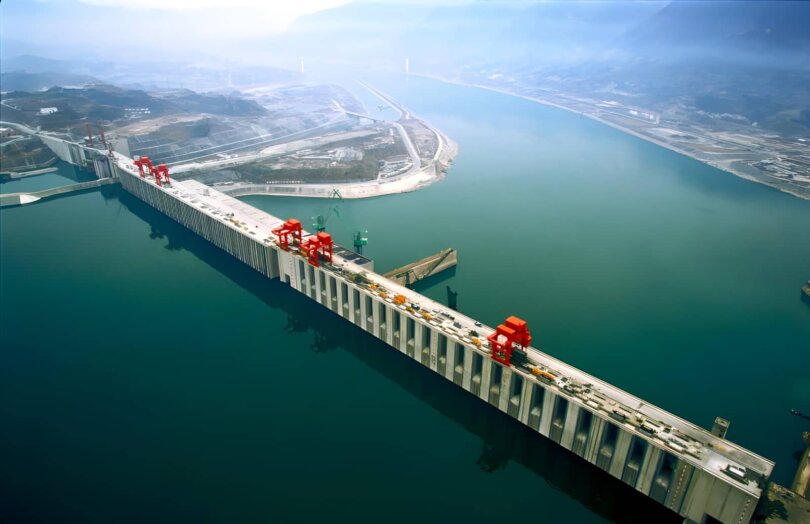Hydroelectric power plants are electric power generation facilities that harness the power of water to produce electricity in a clean and renewable way. These plants are characterized by using the kinetic energy of moving water to drive turbines and generators, which in turn produce electricity.
Hydroelectricity is, therefore, a clean and sustainable source of energy, as it does not emit greenhouse gases or polluting waste. Furthermore, hydroelectric power plants can adjust their energy production to demand, which makes them a reliable and stable source of energy.
The world’s largest hydroelectric power plants are true engineering marvels, capable of producing large amounts of clean, renewable energy to supply millions of people. These power plants are located in different parts of the world and stand out for their size, their generation capacity and their impact on the environment.
In this article, we present the 10 largest hydroelectric power plants in the world, with detailed information on their location, generating capacity and technical characteristics.
1. Three Gorges Dam(三峡大坝)

Aerial view of the Three Gorges Dam and the city of Yichang in the background. Photo by CGTN.
The Three Gorges Dam(三峡大坝) is a hydroelectric power plant located on the Yangtze River in Hubei Province, China. Its construction began in 1994 and was completed in 2011, after an estimated investment of over $37 billion. It is considered one of the largest engineering works in history and has had a significant impact on China’s economy and environment.
The importance of the Three Gorges Dam lies in its ability to produce electricity on a large scale, which has enabled China to reduce its dependence on fossil fuels and reduce carbon emissions. In addition, the dam plays an important role in flood control, as it is capable of retaining large volumes of water during the rainy season and releasing it in a controlled manner during the dry season.
| Country | China |
| River on which it is located | Yangtze |
| Owner | China Yangtze Power, a subsidiary of China Three Gorges Corporation |
| Year started | 1994 |
| Completion year | 2011 |
| Total capacity (MW) | 22 500 |
| Maximum annual production (TWh) | 111.8 |
| Flooded area (km²) | 1 045 |
| Turbines | 34 Francis type of 32 x 700 MW, 2 x 50 MW |
2. Baihetan Dam (白鹤滩大坝)
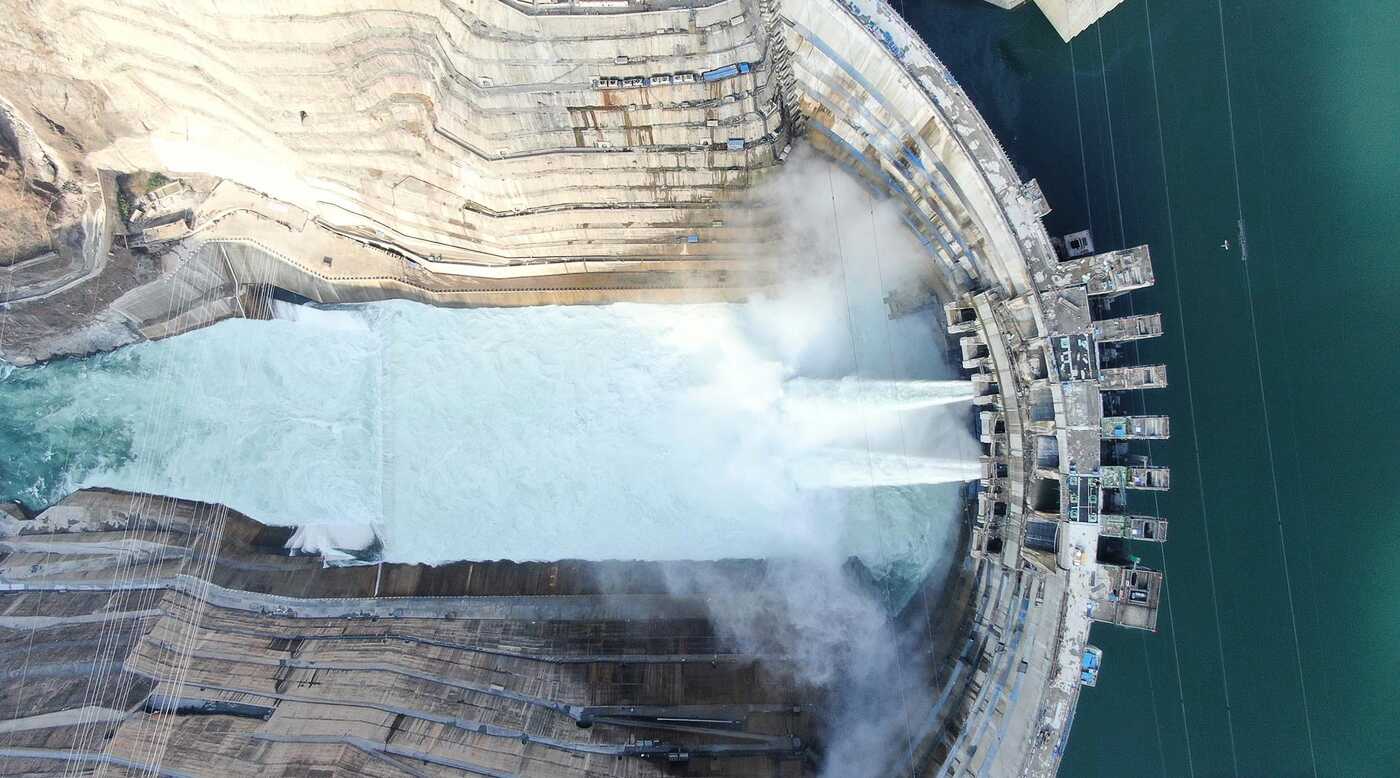
Aerial view of Baihetan Dam. Photo by CGTN.
The Baihetan Dam (白鹤滩大坝) is a large-scale hydropower plant located on the Jinsha River in Yunnan and Sichuan provinces, China. Its construction started in 2017 and the project was completed in 2022. This dam is part of China’s plan to tap the hydropower potential of the Yangtze River, the third longest river in the world.
Its importance lies in the fact that it contributes significantly to China’s energy matrix, generating clean and renewable electricity that supplies millions of homes and businesses in the country. In addition, its construction has boosted the economic and social development of the region, improving local infrastructure and creating job opportunities.
| Country | China |
| River on which it is located | Jinsha |
| Owner | China Three Gorges Corporation |
| Start-up year | 2017 |
| Completion Year | 2022 |
| Total capacity (MW) | 16 000 |
| Maximum annual production (TWh) | 60.24 |
| Flooded area (km²) | |
| Turbines | 16 × 1 GW |
3. Itaipu Dam
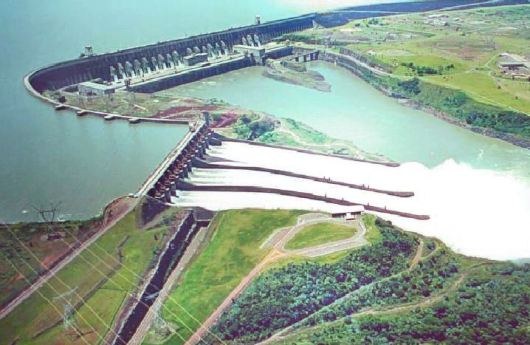
The Itaipu Dam is a binational hydroelectric power plant located on the border between Brazil and Paraguay, on the Paraná River. Inaugurated in 1984 and completed in 1991, the dam became one of the most impressive engineering works of the 20th century. With an installed capacity of 14 GW, for several years it was considered the largest hydroelectric power plant in the world in terms of power generation.
This emblematic project, the result of a partnership between Brazil and Paraguay, has a major socioeconomic and environmental impact on both nations. The energy produced by Itaipu represents about 15% of Brazil’s total consumption and 75% of Paraguay’s consumption. In addition, the project has promoted sustainable development in the region, including reforestation programs, environmental conservation and improvements in local infrastructure.
| Country | Brazil and Paraguay |
| River on which it is located | Paraná River |
| Owner | Itaipu Binacional |
| Year started | 1975 |
| Year of termination | 1991 |
| Total capacity (MW) | 14,000 MW |
| Maximum annual production (TWh) | 103.1 TWh |
| Flooded area (km²) | 1,350 km² |
| Turbines | 20 Francis turbines, 700 MW each |
4. Xiluodu Dam (溪洛渡大坝)
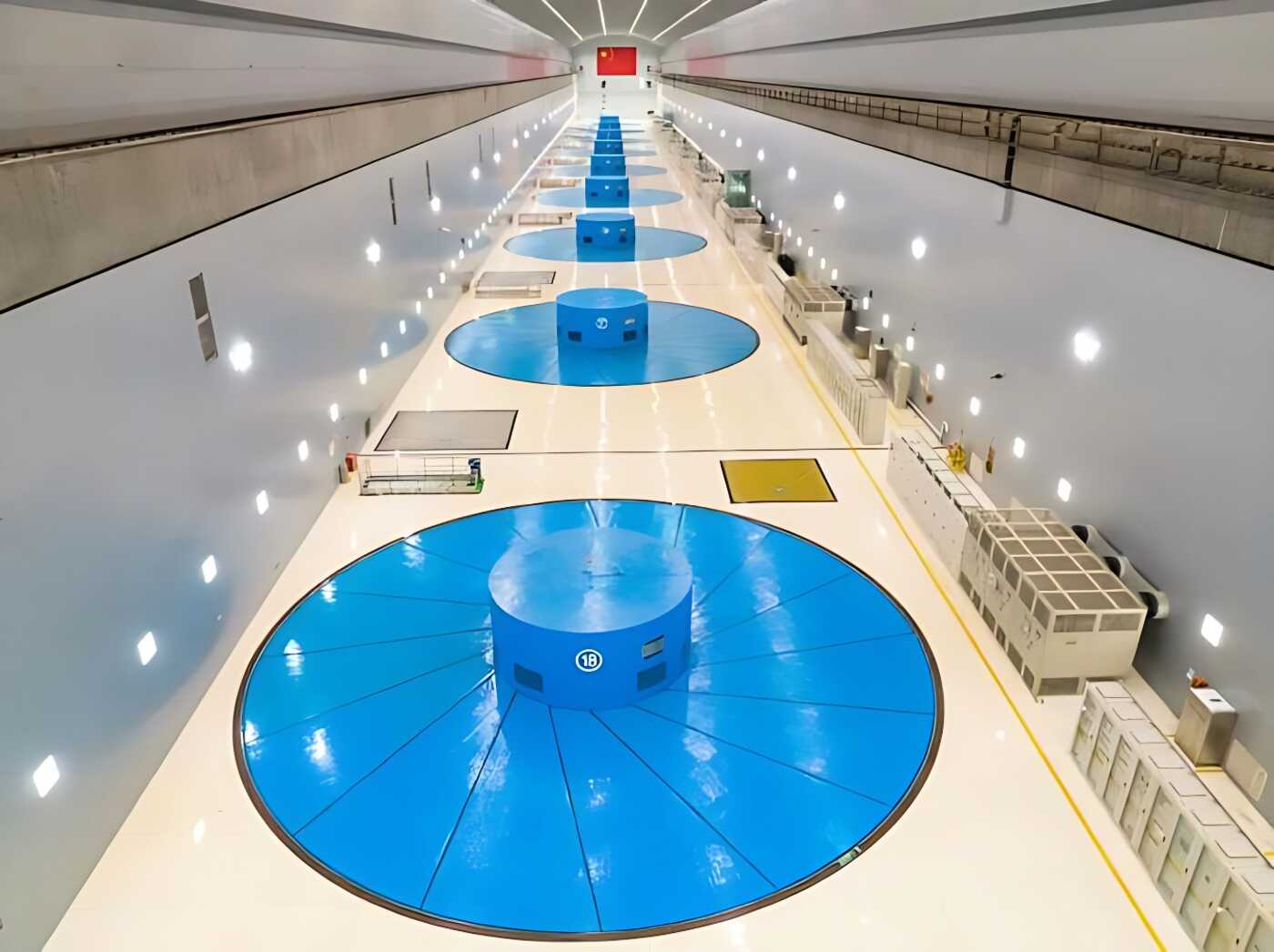
Inside Xiluodu Dam. Photo by 谢雷. Via ThePaper.cn
Xiluodu Dam (溪洛渡大坝) is a large-scale hydropower plant located on the Jinsha River, a tributary of the Yangtze River in Yunnan Province, China. It began construction in 2005 and was completed in 2014. With an installed capacity of 13.86 GW, it is one of the largest hydropower plants in the world and plays a crucial role in China’s renewable energy supply. In addition, the dam helps control floods and improve river navigation.
The construction of the Xiluodu Dam was a milestone in modern hydropower engineering, as it features several innovative features. These include a 285.5-meter-high double-curvature gravity dam, a subway powerhouse with 18 reversible Francis turbines of 770 MW each, and a reservoir with a capacity of 12.67 billion cubic meters. These features allow a maximum annual production of 53.9 TWh of clean and reliable energy.
| Country | China |
| River on which it is located | Jinsha River |
| Owner | China Huaneng Group |
| Start-up year | 2005 |
| Completion year | 2014 |
| Total capacity (GW) | 13.86 GW |
| Maximum annual production (TWh) | 53.9 TWh |
| Flooded area (km²) | >100 km² |
| Turbines | 18 Francis turbines of 770 MW each |
5. Belo Monte Dam
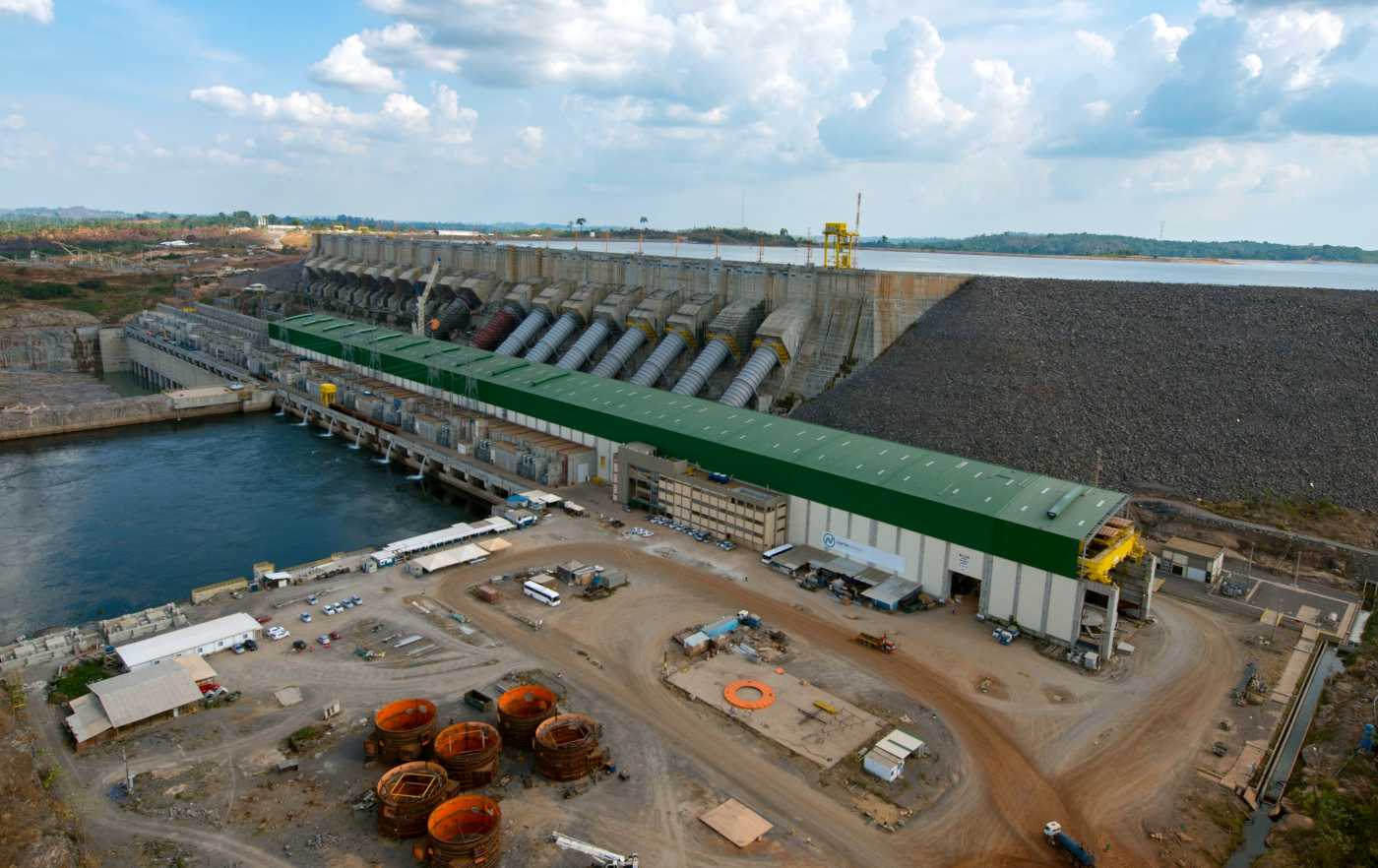
Belo Monte Dam on the Xingu River. Photo by Fernanda Brandt.
The Belo Monte Dam is a hydroelectric power plant located on the Xingu River in the Amazon region of Brazil.
The idea of building a dam on the Xingu River dates back to the 1970s, but it was not until 2011 that construction work began. The dam was completed in 2019 and has a total power generation capacity of 11,233 megawatts (MW). The importance of the Belo Monte Dam lies in its contribution to Brazil’s energy matrix, as the country relies heavily on hydroelectric power.
| Country | Brazil |
| River on which it is located | Xingu River |
| Owner | Norte Energia |
| Start-up year | 2011 |
| Completion year | 2019 |
| Total capacity (MW) | 11.233 |
| Maximum annual production (TWh) | 40 |
| Flooded area (km²) | 441 |
| Turbines | 18 Francis turbines of 611.11 MW each |
6. Guri Dam (Simón Bolívar Hydroelectric Power Plant)
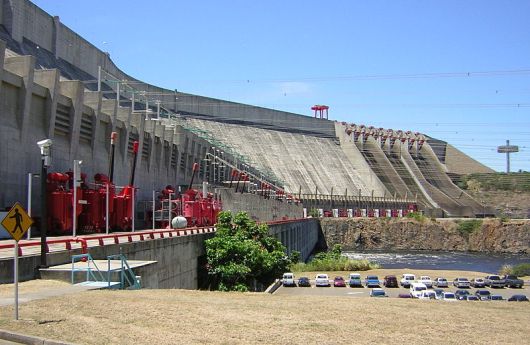
The Guri Dam, also known as the Simón Bolívar Hydroelectric Power Plant, is one of the largest dams in the world and the main source of electric power in Venezuela. Located on the Caroní River in the state of Bolívar, the dam was built to take advantage of the enormous hydroelectric potential of the region. Its construction began in 1963 and was completed in 1978, with a total investment of US$4.5 billion.
The importance of the Guri Dam lies in its capacity to generate electricity on a large scale. With an installed capacity of 10,235 megawatts (MW), the dam can produce up to 47 billion kilowatt-hours (kWh) per year, which represents approximately 73% of the country’s energy demand. This enormous energy production has allowed Venezuela to export electricity to neighboring countries such as Brazil and Colombia.
| Country | Venezuela |
| River on which it is located | Caroní River |
| Owner | National Electric Corporation (CORPOELEC) |
| Year started | 1963 |
| Year of termination | 1978 |
| Total capacity (MW) | 10.235 |
| Maximum annual production (TWh) | 47 |
| Flooded area (km²) | 4 250 |
| Turbines | 21 Francis turbines |
7. Wudongde Dam (乌东德坝)
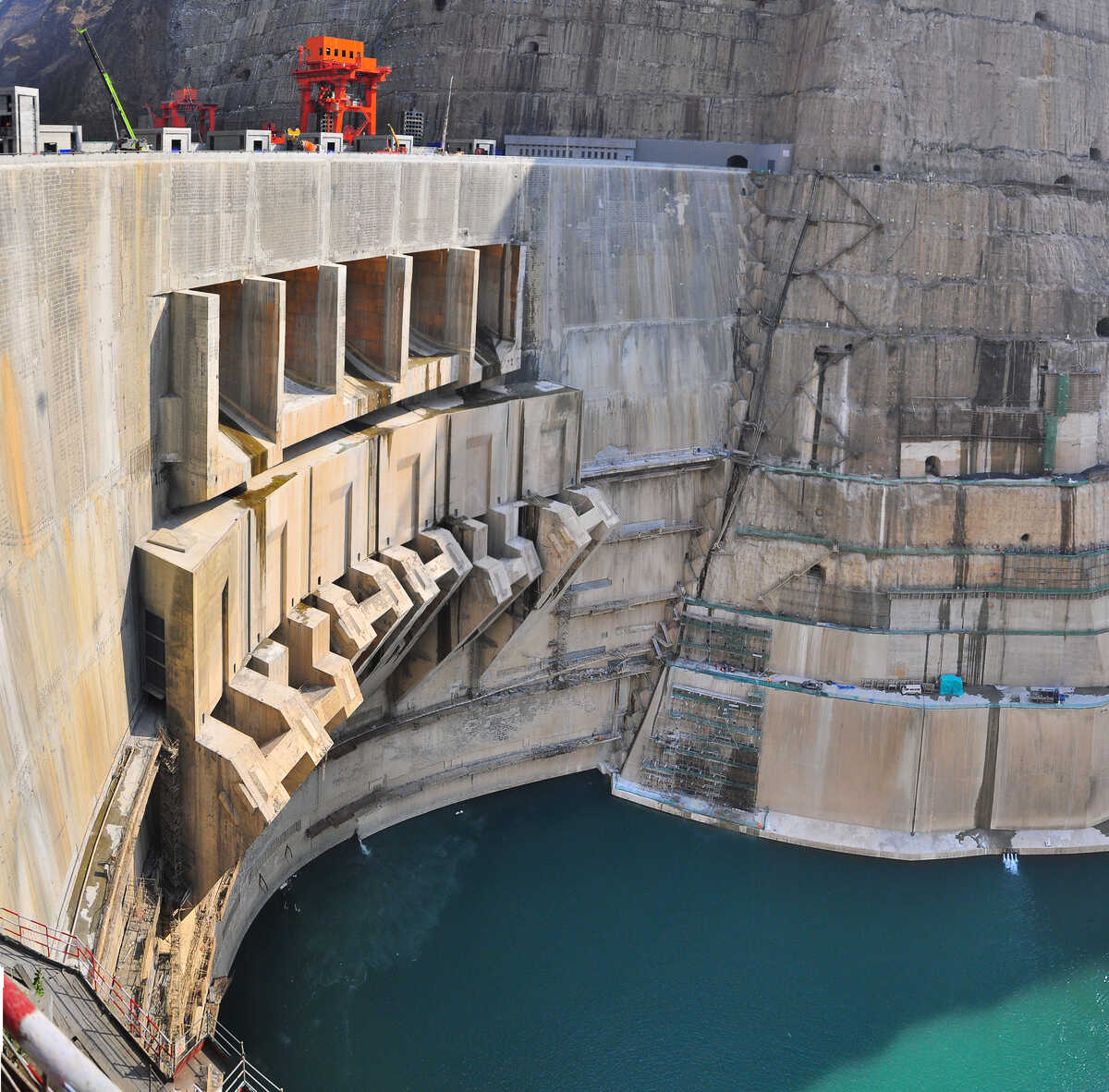
Side view of Wudongde Dam. Photo by Zhangmoon618.
Wudongde Dam (乌东德坝) is a large-scale hydropower plant located in Yunnan province, southwest China. This dam is the fourth largest in the country and the seventh largest worldwide in terms of power generation capacity. Construction of the dam began in 2007 and was completed in June 2021, with a total investment of approximately US$54 billion. The Wudongde Dam will play a crucial role in China’s transition to a cleaner and more sustainable energy matrix, as it will help reduce reliance on coal and improve national energy security.
Wudongde Dam is located on the Jinsha (金沙江) River, the upper reaches of the Yangtze River. It has a height of 278 meters and a crest length of 729 meters. The total installed capacity of the hydropower plant is 10.2 GW, making it one of the largest in the world. It is estimated that the Wudongde Dam will produce approximately 38.9 TWh of electricity per year, which is equivalent to the annual electricity consumption of more than 3 million Chinese households.
| Country | China |
| River on which it is located | Jinsha River (金沙江) |
| Owner | China Three Gorges Corporation (CTGC) |
| Start-up year | 2007 |
| Completion Year | 2021 |
| Total capacity (MW) | 10.200 GW |
| Maximum annual production (TWh) | 38.9 |
| Flooded area (km²) | 47 |
| Turbines | 12 Francis turbines of 850 MW each |
8. Tucuruí Dam
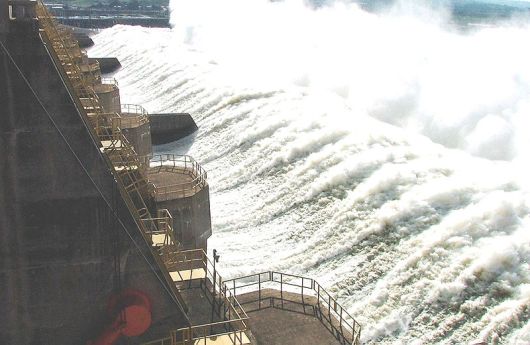
The Tucuruí Dam, officially called Centrale Lélio Antonio Gama, is a hydroelectric power plant of great importance in Brazil. Built on the Tocantins River, this power plant was an emblematic project in the country’s energy history.
Inaugurated in 1984, the Tucuruí Dam represents one of the largest Brazilian engineering works. Its installed capacity makes it one of the country’s main sources of renewable energy. Although its construction resulted in the flooding of vast areas of Amazon rainforest and the displacement of thousands of people, the plant continues to play a crucial role in supplying energy to millions of homes and businesses in Brazil.
| Country | Brazil |
| River on which it is located | Tocantins River |
| Owner | Eletrobras Eletronorte |
| Year started | 1975 |
| Year of termination | 1984 |
| Total capacity (MW) | 8370 MW |
| Maximum annual production (TWh) | 41.43 TWh |
| Flooded area (km²) | 3014 km² (km²) |
| Turbines | 25 Francis turbines |
9. Grand Coulee Dam
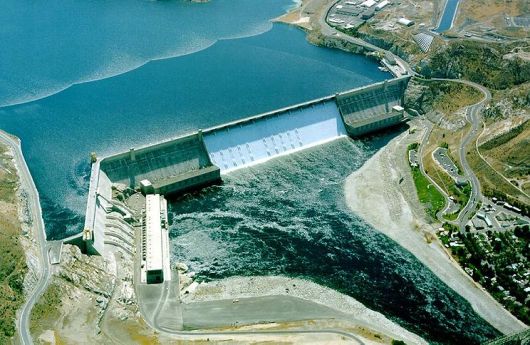
Grand Coulee Dam is a hydroelectric power plant located on the Columbia River in the state of Washington, United States. Its construction began in 1933 and was completed in 1942, although the last turbines were installed in 1980. This dam is considered one of the most impressive engineering works of the 20th century and plays a crucial role in supplying electricity to the northwest region of the country.
Historically, the dam was built during the Great Depression as part of the New Deal, a federal government program to stimulate the economy and provide employment. Grand Coulee Dam not only generates clean, renewable energy, but also facilitates the irrigation of more than 670,000 acres of farmland, contributing significantly to agricultural development in the region.
| Country | United States |
| River on which it is located | Columbia River |
| Owner | Bureau of Reclamation |
| Year started | 1933 |
| Year terminated | 1980 |
| Total capacity (MW) | 6809 |
| Maximum annual production (TWh) | 21 |
| Flooded area (km²) | 324 |
| Turbines | 33 |
10. Xiangjiaba Dam (向家坝)
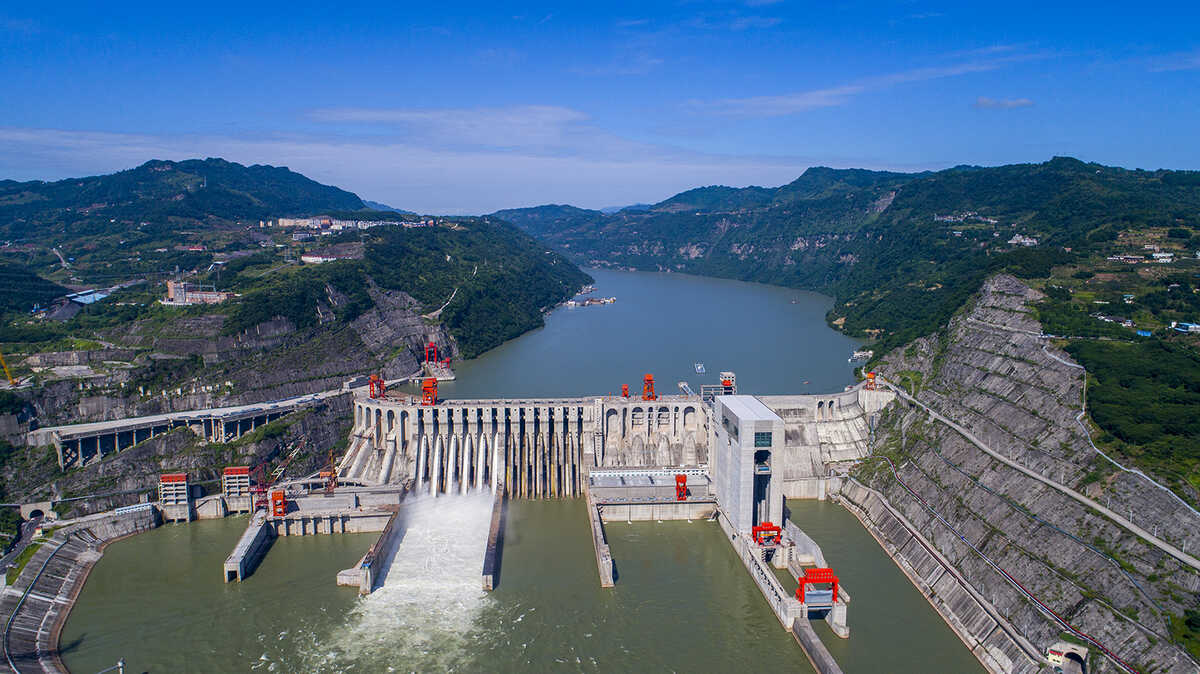
Aerial view of Xiangjiaba Dam. Photo by PowerChina.cn.
Xiangjiaba Dam (向家坝) is a hydropower plant located on the Jinsha River in Sichuan province, China. Opened in 2012, this dam is one of the largest in the world and is part of the Jinsha River Cascade project, a series of hydroelectric dams along the Jinsha River. Construction of Xiangjiaba began in 2006 and its completion in 2012 marked an important milestone in China’s renewable energy development.
Xiangjiaba Dam is of significant importance in providing clean and renewable energy in China, contributing to carbon emission reduction and sustainable economic growth. With a total capacity of 6,448 megawatts (MW), this hydropower plant is capable of producing around 31.6 terawatt-hours (TWh) of electricity per year, equivalent to the annual electricity consumption of more than 30 million Chinese households. In addition, its construction has improved water resource management and flood prevention in the region.
| Country | China |
| River on which it is located | Jinsha River |
| Owner | China Three Gorges Corporation |
| Start-up year | 2006 |
| Completion Year | 2012 |
| Total capacity (MW) | 6 448 |
| Maximum annual production (TWh) | 31.6 |
| Flooded area (km²) | 95.6 |
| Turbines | 8 |
Conclusion
Creating clean energy from hydropower plants is an important strategy for many countries in their efforts to reduce greenhouse gas emissions and promote sustainable development. China leads the list with 5 generating dams in the list of the largest. It is worth noting that the United States has only one hydroelectric plant in the ninth position, which began construction almost 100 years ago.
Via: English Wikipedia(1, 2, 3, 4, 5), Spanish Wikipedia
